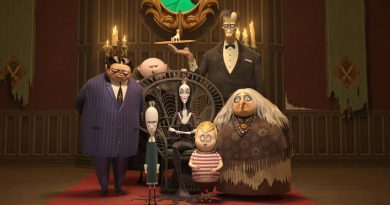Dora and the Lost City of Gold (2019) Review
For the record, I hated Dora the Explorer animated TV show. Things like her annoyingly loud voice, the D-D-D-D-Dora theme song, repetitive dialogues and the equally irritating “Swiper, no swiping” remark is seriously a nerve-racking, test of patience. And yet, the series proved to be so successful that it actually survived eight seasons until today since its debut in 2000. Perhaps the real reason why Dora the Explorer became such a phenomenally popular children’s television show is due to its interactive video game-like edutainment that encourages kids to participate and help Dora on her “quest”.
So, after 19 years since its TV series debut, here comes a live-action feature treatment that I initially figured it must have been one of the biggest jokes of the year. I mean, can you imagine if the movie chose to stay faithful with all the break-the-fourth-wall interactive quests populated by the series? That would be a recipe for disaster since it probably going to limit its demographics to parents showing up with their preschooler kids.
But thankfully, director James Bobin along with screenwriters Matthew Robinson and Nicholas Stoller are smart enough to find the middle ground that appeals to both fans and even those who hate the show in the first place. Before I proceed further with the review, here is the synopsis about Dora and the Lost City of Gold: the movie focuses on the teenage version of Dora (Isabela Moner), who has been living with her explorer parents (Eva Longoria and Michael Pena) in the jungle since childhood. Then one day, her parents decide to send her off to Los Angeles, where she would stay with her cousin Diego (Jeff Wahlberg) and learn to adapt to her new high-school life for the first time ever.
As Dora tries to adjust to her new surrounding in the city, she along with Diego and two of her classmates Sammy (Madeleine Madden) and Randy (Nicholas Coombe) both end up getting abducted by a small group of mercenaries led by Powell (Temuera Morrison) while on a field trip in a museum. Apparently, the kidnapping has to do with the search of the mythical city of gold, which happens to be the same thing that Dora’s parents have been looking for all this while.
The good thing about Dora and The Lost City of Gold is that the movie doesn’t take itself seriously and even daring enough to poke fun on the main character and the fundamental premise itself. For instance, when Dora breaks the fourth wall just like her animated TV character would do, that particular scene does so in the utmost sardonic sense of humour. The screenwriters also effectively included a Crocodile Dundee-like fish-out-of-water comedy element, which can be evidently seen during some of the few stretches set in the city. The movie manages to land a few worthwhile laughs, as we witness how Dora unwittingly make a fool of herself while adjusting to her new surrounding as a high-school teenager.
Then, there’s the extended hallucinogenic scene involving Dora and her friends making their way to a field of unusually gigantic pink flowers — easily the best and funniest part in the movie. It also gives Bobin an opportunity to transform the live-action scene into a familiar 2D animation, while having a field day making fun of it.
Of course, all of this wouldn’t have worked if not for Isabela Moner’s surprisingly better-than-expected performance as the teenage version of Dora. Other than displaying enough likeable charm and wide-eyed innocence to her role, it also helps that she embraces her socially-inept-jungle-nerd character wholeheartedly no matter how silly and self-referential the movie turns out to be. The rest of the cast, particularly Jeff Wahlberg’s Diego, Madeleine Madden’s Sammy and Nicholas Coombe’s Randy deliver equally solid supports to their respective roles.

The CG is mostly a mixed bag and ironically, that’s the beauty of it. Even for the fact that the CG monkey and bandana-wearing fox characters of Boots and Swiper — voiced respectively by Danny Trejo and Benicio Del Toro — look as if they belong to the relics of the 1990s dated special effects. Perhaps this is one of those rare moments where sometimes imperfection does work in a way that not every CG character needs to be photorealistic.
Not everything works in Dora and The Lost City of Gold, though. The movie’s tween-friendly attempt to blend 1980s-style action-adventure in the veins of Indiana Jones and The Goonies only manage to be sporadically entertaining at best. In fact, the whole locate-the-lost-city-of-gold scenario feels like a walk in the park that doesn’t exactly possess any real sense of danger. Sure, the movie is supposed to be a family-friendly PG-rated entertainment but does it hurt to at least raise up the stakes? Some of the jokes tend to be cringey and painfully juvenile. This is especially true during the whole quicksand scene, which gives the movie a sorry excuse to throw in some lame fart jokes.
Despite some of the flaws, Dora and the Lost City of Gold turns out to be a pleasant surprise after all — something that I would never expect from an established IP that has to do with Dora the Explorer.





